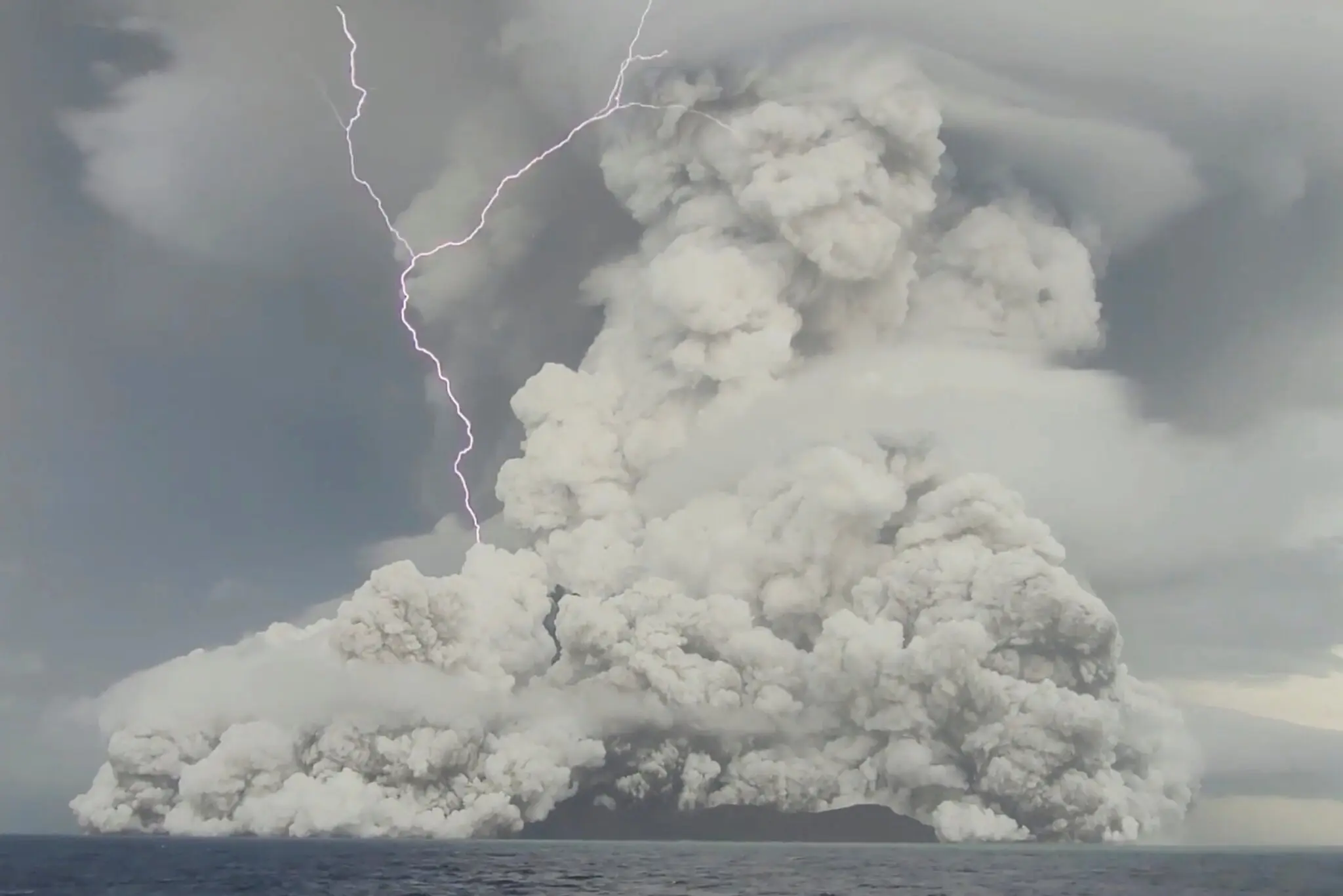Deep under the southern Pacific Ocean, the Tongan volcano erupted in January, and scientists have learned that the explosion was the largest volcanic eruption ever recorded.
The Journal of Science published two papers that reviewed data on the eruption, both of which agreed the magnitude of the blast was even more significant than any of the atom bombs tested after WWII.
The Krakatoa volcano, which erupted in 1883, is the only volcano that spewed out a comparable amount of debris. The eruption resulted in 30,000 Indonesian deaths that year. But since the Tongan volcano is underwater, the casualties were not as high. The Tonga eruption did, however, create two large tsunamis.
The Hunga Tonga-Hunga Ha’apai is a “submarine volcano” 40 miles north of the Tongan capital, Nuku’alofa. The volcano erupted on January 15, creating strong tsunami waves and covering the Pacific nation in ash. But unlike Krakatoa, the Tonga eruption killed just three people.
A researcher at the University of California at Santa Barbara, Dr. Robin Matoza, who is also the lead author of one of the papers published in the Journal of Science, said, “Tonga was a truly global event, just as Krakatau was, but we’ve now got all these geographical observation systems and they recorded something that was really unprecedented in the modern data.”
Scientists can now take advantage of technology examining eruptions, including a fleet of satellites that provide images of the Earth’s entire light spectrum, hydro-phones, seismometers, and atmospheric pressure sensors.
People as far as 10,000 kilometers away in Alaska reported hearing several booms.
In 1961, the Soviet Union detonated the Tsar Bomba, the most powerful nuclear weapon ever created and tested. The atmospheric pressure released by that bomb was similar to the Tonga eruption, which lasted four times longer than the Tsar Bomba explosion.
Using data from NASA’s Ionospheric Connection Explorer and European Space Agency satellites, scientists discovered that the eruption caused strong winds similar to hurricanes and unusual electric currents in the ionosphere, which is the upper atmospheric layer of the Earth’s atmosphere. The blast reached the edge of space.
Joanne Wu, a physicist at the University of California, Berkeley and a co-author of the study said, “This is something we’ve only previously seen with strong geomagnetic storms.”
The immense plume that the volcano pushed out into the atmosphere contained dust, water vapor, and gases. As currents move into thinner atmospheric layers with lower atmospheric pressure, winds travel faster. When the winds reached the ionosphere, a layer of the upper atmosphere, they traveled at 450 miles per hour. That is much faster than winds in a hurricane classified as “category 5.”
The lead author of the study, UC Berkeley physicist Brian Harding said, “The volcano created one of the largest disturbances in space we’ve seen in the modern era.”






